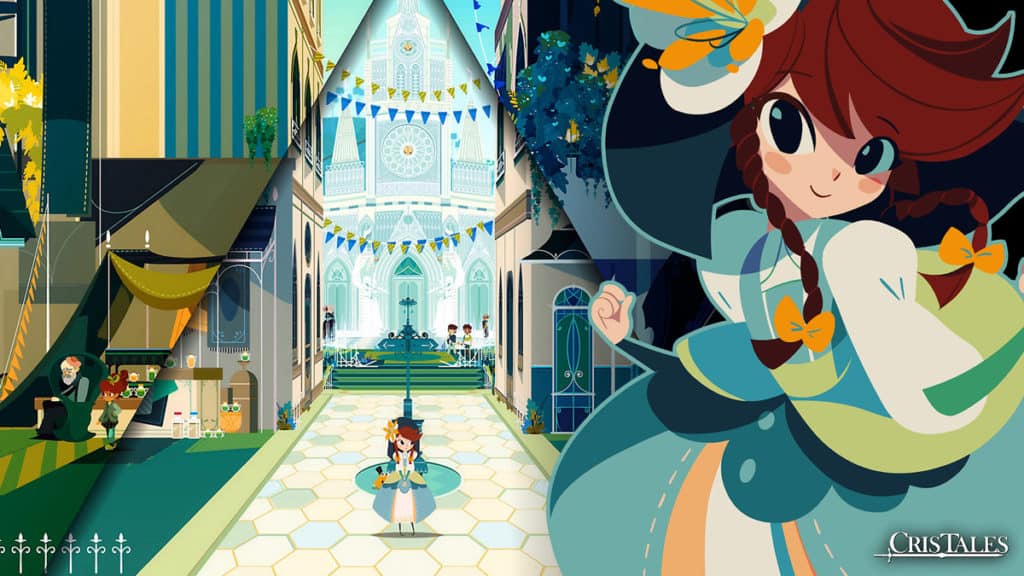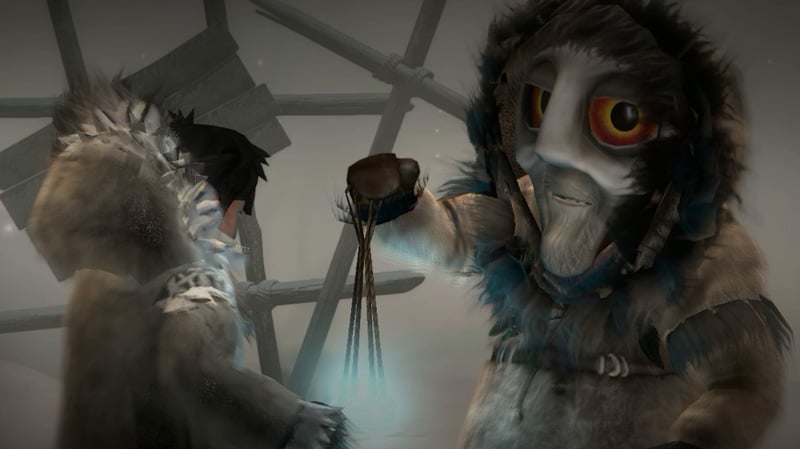By Allison Pomenta
The predominant way in which youth today interact with each other online is through video games. According to a study released by the Entertainment Software Association of Canada, 89 per cent of Canadians aged 6 to 17 played video games in 2020. The way they spend their time playing is healthier than you might think: the most popular genre in this age group across the country is puzzle and word games.
The move to remote learning during school closures has shone a spotlight on several significant problems in current educational systems. The situation has underscored the urgency of solving the digital divide that exists for schools and for students who do not have computers and internet access at home. Many teachers found they lacked the adequate educational technology skills and knowledge that allowed other educators to pivot quickly to online teaching.
Student motivation became a major problem in 2020. One contributing factor has been the sluggish integration of experiential learning into virtual classes—especially in middle and high school—given that most common e-learning tools used by school boards were designed with traditional lecture models in mind. Collaborative learning is at the heart of project-based education models, and this key component has been lacking in current online schooling. Now that teachers have got their bearings, some are trying to promote conversations among classmates and restore engagement with students.
To find out more about the importance of incorporating video games into K–12 learning, we asked six game designers, developers and educators for their thoughts on the role video games play in 21st-century education.
Interview material has been edited and condensed for clarity.
What Games Offer
When planning how to teach their curricular objectives, teachers typically try to find activities and media resources to introduce variety into their lessons and promote active participation by students. For the current generation, video games have become more popular than other forms of media, so it stands to reason that educators might be weighing the pros and cons of using video games in school.
What can video games offer teachers who are already having trouble balancing the demands of school boards, the expectations of parents, and the needs of students—especially for those who might not feel comfortable using video games as a learning tool?
“Games are a natural learning environment. The power of games is that they’re all about usable life skills: agency, experimentation, planning and evaluating. All the 21st-century skills that we want our students to have as adults are part of learning how to be successful in games. All of life is interactive—it’s not a linear, pre-authored flow of information like a video is.
“We accept the rationale that sports teach teamwork, planning, patience, good sportsmanship, an ability to understand [and analyze] failure. In video games, you’re able to identify what the challenge is, think about the tools that you have available, predict different scenarios based on the different choices you have, choose one, craft your own solution, and then assess the results. The feedback loop in games will tell students where they went wrong: ‘Was I wrong in my analysis of the initial situation? Did I have the wrong idea just by looking at this? Was my plan bad? Did I execute it poorly?’ This is the cognitive cycle of gameplay. That’s where the comprehension really happens.
“For students, it’s a much deeper learning experience. In terms of learning outcomes, the student understands how and when to use these concepts, and is able to do something with them. That’s the era we are in now: people need to be able to translate the information that is readily available into some sort of usable outcome.”
“Games can be used to essentially replicate authentic experiences, what you would call ‘field work’, [in a shorter amount of time]. For example, in Tyto Online, we have a councilwoman character announce they’re about to have a food shortage and there’s going to be a huge hunger problem. The students will have to help solve this problem by working with a botanist, learning about Punnett squares and selective breeding, while increasing crop yield. They’re doing things like trying to balance ecosystems so that everything inside doesn’t die. They run experiments on water and light levels in this lab that they’re working in.
“These simulations have goals that require students to demonstrate their knowledge and build that understanding. They are collecting evidence, looking at the data and using it. They’re creating flowcharts, they’re analyzing probabilities. They’re creating arguments from the evidence, within this context of trying to solve a really important question. For a teacher, that’s an authentic product that’s being created by the students.You can start seeing that learning come out, both from the work product your student shows, and from the conversations that you can then prompt in the classroom.
“We had students use Tyto for a day [to test its effectiveness]. We recorded them talking, and had a researcher do an analysis of the discussion, and only 3 per cent of the discussion was off-task. We looked at the amount of time students were spending coordinating, collaborating, and talking about science itself, making debates and hypotheses, was really incredible.”
“There is a lot of good research about the pedagogical value of game-based learning. Games need to be part of the learning ecosystem, and be effectively integrated into it. In almost every school district everywhere in the world, you will find at least one teacher who is an advocate of game-based learning. There are amazing teachers all around the world that are using sandbox games effectively, often because they are gamers themselves, or because they see the engagement in the kids. And there are lots of communities online to share best practices.”
“Think about it in the same way that you would select other instructional materials for your courses. Start off with what it is that you’re trying to achieve. It all starts with your learning objectives and meeting your students where they are. There’s lots of material available to help teachers out.
“For example, in Prodigy we introduced something called a Focus Mode, where you will cover more content in a session. If you don’t use those features, the kids may wander around playing in the fantasy worlds, and not cover as much curricular content. But teachers often don’t know that. It needs to be easy for a teacher to understand what is happening in the experience for the students, what they will be encountering—that’s making onboarding and training easy for teachers. Many vendors are willing to help, and teachers just don’t know that they can ask, or they don’t have the contact with the vendor’s customer service.
“I do think it’s difficult for individual educators to figure out what works. It’s really hard because there’s a variety of products sold by a variety of vendors, with different standards and approaches. Some products are basically not much different than worksheets. In most products, they show you what the standards are. If you are an educator, you need to know what the curriculum coverage is, and if the product meets those requirements. Check what evidence from third parties the product has. There are purchasing consortia, or clearinghouses, that do some of this work and evaluate software. For example, there’s the What Works Clearinghouse. There are [Ed Tech reviews] on the Common Sense Education site.”
Game Creation as a Portal
In many schools, games may not be used to support core curricula, but game creation may be introduced in computer or technology classes. When students are given the opportunity to learn how to make games, they are introduced to skills like planning, systems thinking, storyline creation, design, programming and teamwork, among others.
How important is it to introduce game creation activities for K-12 students?
“If learning a language is mandatory, I think learning a programming language should also be mandatory. Games can be a gateway subject to getting kids excited about programming, and becoming fluent in that language. Kids love games, and the idea that they could actually help to create something like a game is super-engaging for them. It’s a really fun thing for them to feel like they just made something. I was 11 when I started teaching myself how to code. Kids can use any free computer and program it. Writing code and knowing what it’s like to fix something, to add to something, to change values, and really understand [a program]. You don’t really need a powerful computer either. There are some environments right now that are set up to be super interactive—you could be typing code and watching your game change on the screen as you’re typing the code. If you have a good enough environment that makes it easy for iteration, to fix a mistake and see the result instantly, the immediacy in getting feedback is what keeps kids going. If it took a long time to get feedback, they would be less interested.
“Whether you live in a remote location or not, you don’t need to move out of your hometown to make games, especially now. You have the internet, you can learn. You don’t have to be in an urban centre to develop games. You can find people that are interested in the same thing. Our entire team of 30 people is making a game over the internet—they don’t need to be together. The end goal is to have a code-literate generation. Whether they decide to go into a game development [career] or not is up to them, but the fact that they are comfortable with technology has a massive positive effect on them. Even if they do not end up making games as adults, or programming, just being familiar with technology allows them to come up with solutions that can help the whole town. They could think of a business to sell products made in their village, or provide a service that can bring in money to the village.”

“Making video games allowed me to build my future the way I wanted it to be. I decided to study computer science after starting out in electronic engineering, because I loved the idea of creating a virtual space. Creating games that could be deemed ‘educational’ wasn’t a conscious decision, it was a consequence of who I was. I like to wonder ‘Why?’ I like games that make you question your purpose in the world. I started designing serious games in Bucaramanga, and our company is still in this mid-sized [Colombian] city after a decade. Fortunately, game development doesn’t move around a main city, like New York. It doesn’t matter where you’re from, but you have to attend industry events. In 2012, while attending a game developer conference in the United States, I met Zach Barth [founder of Zachtronics and Zachademics], who introduced me to a person from Amplify [an educational technology company]. They hired us to make a new version of the literacy game we had designed. That started my real career in game development.”
Alan Gershenfeld
“We’ve been promoting game design by youth since we started E-Line Media. We did workshops all over the country with Gamestar Mechanic, a platform for learning to make videogames. What we found in every community we went to, whether urban or rural, is that there are always kids who are just passionate about making games. When kids have access to computers and to internet connections, there are incredibly talented kids who are very capable of making really fun games, and could certainly have career pathways into games or technology. Right now, we are working on another sandbox game-creation platform called the Endless Mission, in partnership with Endless Network, to make it easy for youth to learn the Unity game engine, which allows them to make 3D games, and coding in the C# programming language.”
Empowerment and Identity
In addition to their use as a pedagogical support and as a natural environment for practicing flexibility, initiative, and other 21st-century skills, video games can play a key role in the social and emotional development of youth.
How can video games promote kids’ confidence, self-expression, social relationships and feelings of empowerment?
Chris Crowell
“Our current students in K–12 have an expectation of agency and interactivity, of being able to do things with the world. They are exercising a huge amount of agency in the rest of their life. Then they come into a school structure, where not only they do not have agency, [but] the notion of agency is generally being stomped on. That’s the opposite of the internet, it’s the opposite of a multiplayer game experience, which is so much more energetic, creative and fault-tolerant. The world that we live in now, with constant change in every way, requires a growth mindset to be successful. In a lot of modern companies, you want people who can think on the fly, assess the situation and try something new, and who also understand how to collaborate. We’re trying to co-operate for the success of the team, and be outcome-oriented.”
Lindsey Tropf
“There’s a ton of research on the social value of video games. We know that players who play online games are actually more likely to vote and volunteer, and be more civically oriented, and end up having a better perspective about people from other cultures that are different from them. Our character design in Tyto is very diverse in terms of race, gender identity and body types. We also built in strategies that support English-language learners. When we did our in-depth study, we got qualitative feedback. There was one student who, according to the teacher, tended to struggle due to being a newcomer, and at the end of the day of testing they said that the game just made them feel incredibly smart and expressed how powerful of an experience that was for them. And that’s one thing that games can bring to the table for students. Often when students are trying to explain what they know, they need language skills to write it out or verbalize it. In this case, being able to do different challenges and show what they know by using a simulation, and not having to be a good English writer or speaker, can be really powerful for people.”
Carlos Rocha
“I learned English through video games. As a teenager, I was very different from my classmates, who only liked soccer. I liked weirder things. I watched anime and read manga. What I wanted to do was to create art. Games allow me to blend the scientist in me, my love for art, and my desire to express a message. Throughout my university years, my art was my way to escape. I was inspired by Colombia’s Magical Realism literature, by authors like Gabriel García Márquez. In our title currently in development, Cris Tales, there are elements of Colombian culture.”

Alan Gershenfeld
“We’re currently working with the Mississippi Band of Choctaw Indians to make a game based on a sport called stickball, which is one of the oldest North American sports. As we develop that project out, we have a fifth-grade class and a high school class working very closely with our development team.
“When we created Never Alone, we didn’t make a game about the Alaska Native community—we made a game with them. Our team at the Cook Inlet Tribal Council was really committed to learning about video games and putting together a great team of Alaska Native writers, storytellers and community members. When we talked with [representatives from the major commercial game marketplaces] they were saying: ‘We would love to highlight authentic games, as long as they’re good. A game [can] be differentiated by the fact that it’s really bringing an authentic voice, look and set of stories and cultural elements. But it has to be at the level of the other independent games that we highlight.’ At E-Line Media, we’re now looking at genres and systems that might be able to work across different cultures so that we don’t have to reinvent the game each time.”
“The most successful game designers that I know have come from backgrounds where there was often addiction in the home, certainly a lack of money, and housing sometimes at risk. One of the things that I realized is common with many kids who come from underprivileged backgrounds—which would include John and me—is tremendous resilience. I really do believe that there is something in that early struggle that ultimately leads to an understanding, and a creativity, and an ability to produce fun, too.
“Right now, the most popular form of media in the world is games. It’s not books, it’s not TV. Even if you add film, radio and other media together, it’s still not as strong as games. So, kids of all cultures are experiencing largely an American view created by mostly American white men. There’s a cultural emergency to this. What stories are being told? What percentage of games being played are [Indigenous-created] content? And that is the cultural emergency: to get Indigenous voices in there, to get people of colour, to get women in there. There’s a lot of opportunity for people to tell stories. It’s about continuing to come up with ideas, pushing your narrative, and getting more people excited about it. There’s a lot of room for Indigenous creativity. A Canadian Indigenous legend or a historic character can be developed into a well-known intellectual property. Once it gets bigger, if it blows up, a big company will want to license the intellectual property and promote it. Then it can become huge.”*
The potential for using video games as a medium to convey cultural or personal identity is greater now due to their pervasiveness. People across the age spectrum are using video games as vehicles for self-representation, and cooperative or competitive play. As our experts have described, video games are also capable of engaging students in extended practice of a variety of competencies, simulating real-life contexts, and providing deeper dives into curricular subject matter. They can also be used as springboards for expanded discussions that lead to greater comprehension. Furthermore, involving young people in making games introduces them to digital technology and design, and their creations become a tangible product of 21st-century skills. Considering the hard and soft skills that can be supported through video games, incorporating this type of interactive media designed specifically for educational purposes has become a key learning resource in educators’ toolkits.
¹ Endless Network is a network of companies, nonprofits and individuals who aspire to “harness the power of cutting edge games to advance education and tackle the barriers of the device and broadband access in the digital divide.” From Endless Network’s website










